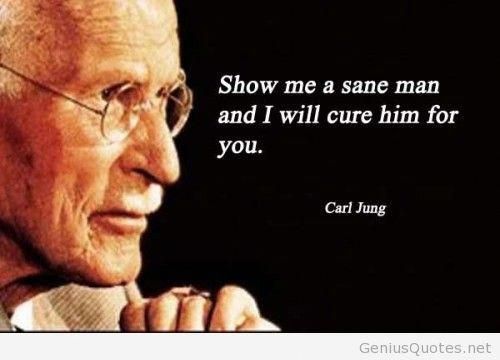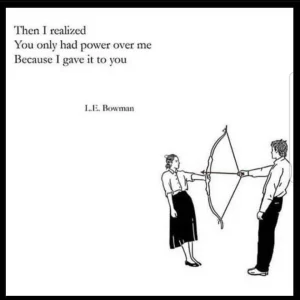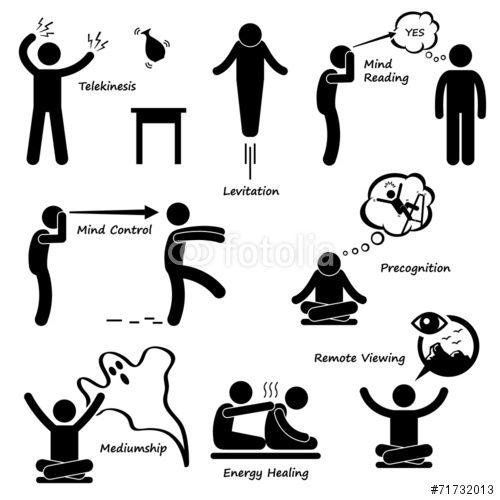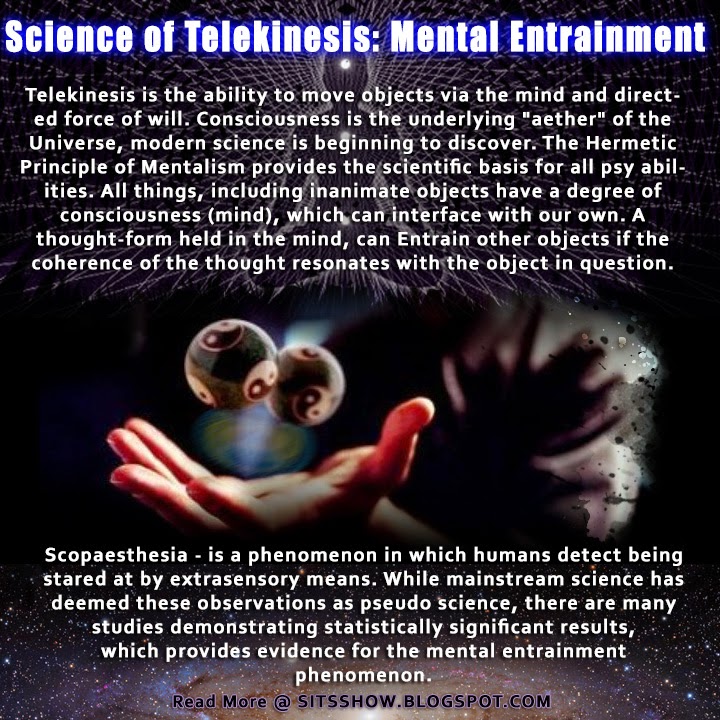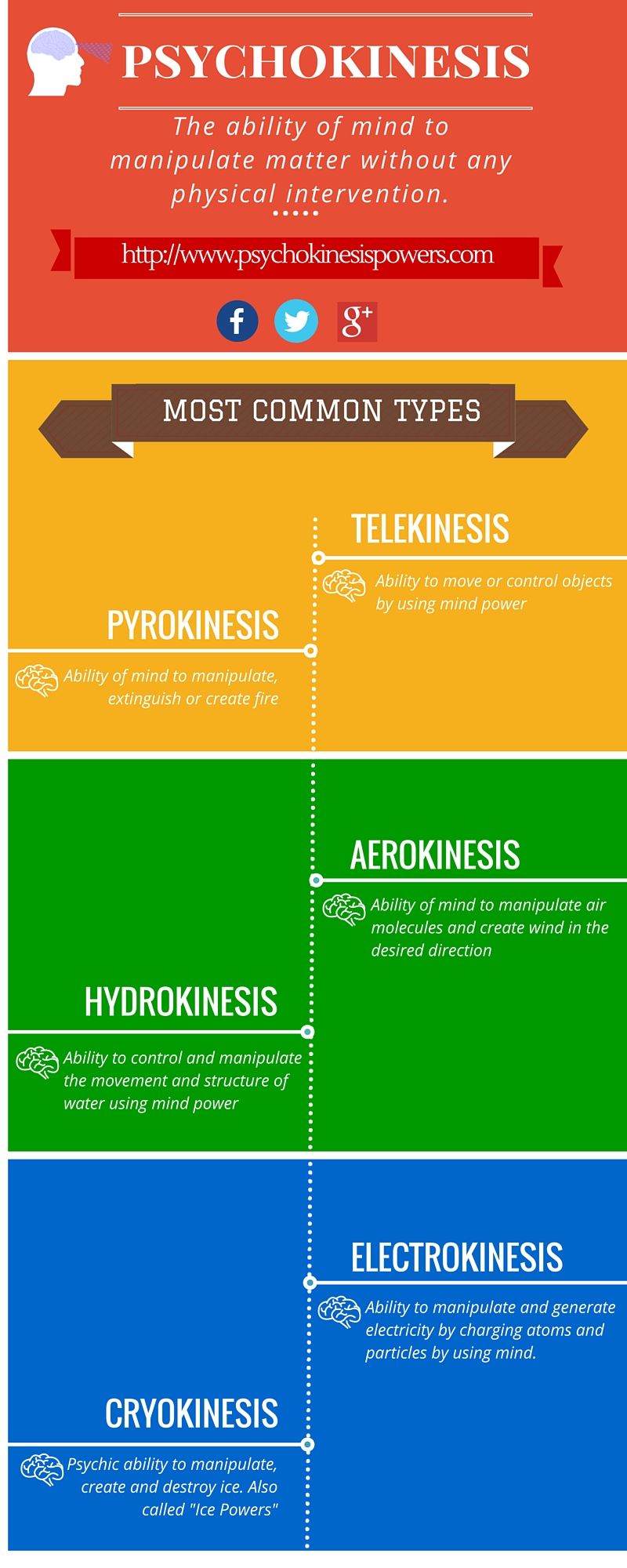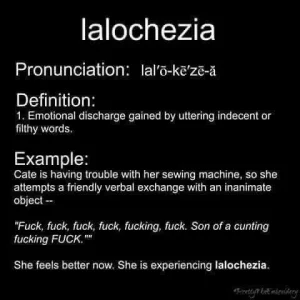You are using an out of date browser. It may not display this or other websites correctly.
You should upgrade or use an alternative browser.
You should upgrade or use an alternative browser.
Merkabah
- Thread starter Skarekrow
- Start date
More options
Who Replied?Impact Character
folding paper cranes ⭐
- MBTI
- inconcrete
- Enneagram
- 964
I think this can apply to all sexes...
There is definitely a toxic masculinity culture to overcome though for many of the guys out there.
It's a good list to be mindful of.

I believe in sensitive and kind men.
I believe in the mystical men who believe in themselves.
I believe in men who seek temperance and peace inside them.
I believe in men poets, dreamers, magicians, writers, alchemists, artists, teachers, and angels.
I believe in men who like to dance and sing and make life a celebration.
I believe in men who embrace their wounded inner child, listen to him and embrace him true.
I believe in men who want to heal and help others to heal.
I believe in men who refuse to be slaves to their own wound and that despite the pain,
they clean it and heal it patiently, with love and courage.
I believe in men who come from the stars and remember the power of their wings,
the power of their hands and the power of their heart.
I believe in men who know of intuition and use it as their compass.
I believe in men who share freedom because they are free and do not know another way to live.
I believe in the men protective of women's energy, who know how to read the look of their beloved and who do not intend to change it, simply accompany it wisely on their flight.
I believe in full men who don't need anything from outside because they already know that everything has it inside.
I believe in men who make fire when they are cold, that take refuge in water when they are thirsty.
I believe in men with truthful eyes they see themselves and that's why they
love and respect every creature exists on earth.
I believe in men, perfectly imperfect, because it is in that imperfection is where they also find their beauty.
I believe in sensitive men who know how to receive and give love in balance,
who listen and who also speak, those who live and let them live.
I believe in men who live sexuality as sacred, because they know that it is a wonderful gift.
I believe in men with clear feelings, which are accessible.
I believe in men who walk barefoot and speak to the plants.
I believe in the tender and wild men at the same time.
I believe in the sacred male and in all the divinity they have stood.
By Rishima for:
Sacred Masculine
How wonderful!



John K
Donor
- MBTI
- INFJ
- Enneagram
- 5W4 549
JennyDaniella
Stargazer
- MBTI
- INFJ
- Enneagram
- 925
Lmfaooooo the second meme is a constant daily occurrence
Skarekrow
~~DEVIL~~
- MBTI
- Ni-INFJ-A
- Enneagram
- Warlock
View attachment 60087

(Especially when driving!!)
For sure, lmao!Lmfaooooo the second meme is a constant daily occurrence

(Especially when driving!!)
JennyDaniella
Stargazer
- MBTI
- INFJ
- Enneagram
- 925
Microscopic view of the foot of a beetle...I'm not sure, can we call all of them toes?
Skarekrow
~~DEVIL~~
- MBTI
- Ni-INFJ-A
- Enneagram
- Warlock
HAHA oh boy, driving is the worst!
For sure.
I've gotten better at it...
But from my POV...
Having seen lots of accidents working on the ambulance and the ER and OR, I still get very perturbed when I see someone driving badly.
Or if I see someone doing something blatantly dangerous it kind of chaps my ass...it's one thing to crash your shopping cart into the stand of apples in the grocery store, or to fly off a cliff in GTA....but in the real world...in big fucking potentially deadly vehicles I find it arrogant, selfish, and/or ignorant/obvious to their own dangerous driving though culpable nonetheless.
It's those folks who kill innocent people...did you know drunk drivers have a statistically higher survival rate from the same accidents where they kill others?
It all has to do with the body being in a state of less tension...that and they quite often t-bone people.
Anyhow...besides drunks...there are people I see every damn day run stop signs, stop lights, speeding way beyond what is considered okay when pushing the limit a bit like most people do...ignoring people waiting to cross on damn crosswalks...then I get honked at for stopping...suck it big time.
I saw a dumbass in his raised pick-up the other day jet past the school bus with it's flashing stop sign out (where are the cops when you need them?)...sure, hurry up and get to the sports bar before the game starts or whatever stupid worthless reason he had for breaking laws meant to keep children from being run over by idiots in big pick-ups compensating for their tiny dicks and fragile egos.
(Ramble over)
Lots of love Jenny!!

Microscopic view of the foot of a beetle...I'm not sure, can we call all of them toes?
Aren't those amazing!
NASA should pay attention to such designs for their rovers and whatnot...imho, nature will beat any design they could ever come up with!
So bizarre looking!
Hope you are doing well...have a peaceful day and week!

Absolutely amazing! Very true for use in equipment design.Aren't those amazing!
NASA should pay attention to such designs for their rovers and whatnot...imho, nature will beat any design they could ever come up with!
So bizarre looking!
Hope you are doing well...have a peaceful day and week!
:3white:
I'm always trolling for new quilt ideas. That foot would be a challenge for an airbursh center block in a art quilt wall-hanging!
Things are better, liquid oatmeal, cream of wheat and fruit/veg smoothies for now. Keeping busy with Dad & volunteering stuffs. Results come back in another week, fingers & toes crossed the word is good. I'm getting sick and tired of telling folks I'm sick and tired, lol.
Hoping all is well with you all ...enjoy your week as too, snow and freezing rain on the horizon here
Skarekrow
~~DEVIL~~
- MBTI
- Ni-INFJ-A
- Enneagram
- Warlock
Absolutely amazing! Very true for use in equipment design.
I'm always trolling for new quilt ideas. That foot would be a challenge for an airbursh center block in a art quilt wall-hanging!
Things are better, liquid oatmeal, cream of wheat and fruit/veg smoothies for now. Keeping busy with Dad & volunteering stuffs. Results come back in another week, fingers & toes crossed the word is good. I'm getting sick and tired of telling folks I'm sick and tired, lol.
Hoping all is well with you all ...enjoy your week as too, snow and freezing rain on the horizon here❤
So good to hear you are doing okay!

That would be a really interesting quilt!
I bet that would beat them all at the fair.
It's just been dark and cloudy here mostly...though it looks like the sun is coming out today finally!
With the time change and it being dark all day, all week, it's been weird...not sure I would like those winters in Alaska much.
Otherwise...chugging along...reading stuff...meditating....sleeping.
It's funny...but the pain was always in the forefront of my life and mind and thoughts for so many years...I realized I wrote that last sentence without it even being a thought in my head - though it remains just as painful and still progressive.
It's nice to not feel that as a large portion of my "self" which is how I used to feel.
It's nice to not feel that as a large portion of my "self" which is how I used to feel.
Stay toasty and warm!
Lots of long hot showers or baths are my favorite...I wish I had my own soaking tub or steam room...that would be rad for my arthritis!
One day, I'm making my own dammit!
Anyhow...you're so sweet and genuinely kind Sandie!

John K
Donor
- MBTI
- INFJ
- Enneagram
- 5W4 549
That picture is really something. It’s like an abstract painting. Do you know if the colours are true to life or have they been added artificially to show the details clearly. Either way it’s a work of art.Aren't those amazing!
Skarekrow
~~DEVIL~~
- MBTI
- Ni-INFJ-A
- Enneagram
- Warlock
That picture is really something. It’s like an abstract painting. Do you know if the colours are true to life or have they been added artificially to show the details clearly. Either way it’s a work of art.
I honestly do not know...I imagine they are added somehow or are an artifact of the way the image is taken...not sure?
Maybe it's like the pictures we have of nebula in space where they color in certain wavelengths we wouldn't be able to see?
I agree that it is beautiful nonetheless!!
Last edited:
Skarekrow
~~DEVIL~~
- MBTI
- Ni-INFJ-A
- Enneagram
- Warlock
A little panpsychism with a twist for you.
Enjoy!
Explaining how something as complex as consciousness can emerge from a grey, jelly-like lump of tissue in the head is arguably the greatest scientific challenge of our time.
The brain is an extraordinarily complex organ, consisting of almost 100 billion cells – known as neurons – each connected to 10,000 others, yielding some ten trillion nerve connections.
We have made a great deal of progress in understanding brain activity, and how it contributes to human behaviour.
But what no one has so far managed to explain is how all of this results in feelings, emotions and experiences.
How does the passing around of electrical and chemical signals between neurons result in a feeling of pain or an experience of red?
There is growing suspicion that conventional scientific methods will never be able answer these questions.
Luckily, there is an alternative approach that may ultimately be able to crack the mystery.
For much of the 20th century, there was a great taboo against querying the mysterious inner world of consciousness – it was not taken to be a fitting topic for "serious science".
Things have changed a lot, and there is now broad agreement that the problem of consciousness is a serious scientific issue.
But many consciousness researchers underestimate the depth of the challenge, believing that we just need to continue examining the physical structures of the brain to work out how they produce consciousness.
The problem of consciousness, however, is radically unlike any other scientific problem.
One reason is that consciousness is unobservable.
You can't look inside someone's head and see their feelings and experiences.
If we were just going off what we can observe from a third-person perspective, we would have no grounds for postulating consciousness at all.
Of course, scientists are used to dealing with unobservables.
Electrons, for example, are too small to be seen.
But scientists postulate unobservable entities in order to explain what we observe, such as lightning or vapour trails in cloud chambers.
But in the unique case of consciousness, the thing to be explained cannot be observed.
We know that consciousness exists not through experiments but through our immediate awareness of our feelings and experiences.
So how can science ever explain it?
When we are dealing with the data of observation, we can do experiments to test whether what we observe matches what the theory predicts.
But when we are dealing with the unobservable data of consciousness, this methodology breaks down.
The best scientists are able to do is to correlate unobservable experiences with observable processes, by scanning people's brains and relying on their reports regarding their private conscious experiences.
By this method, we can establish, for example, that the invisible feeling of hunger is correlated with visible activity in the brain's hypothalamus.
But the accumulation of such correlations does not amount to a theory of consciousness.
What we ultimately want is to explain why conscious experiences are correlated with brain activity.
Why is it that such activity in the hypothalamus comes along with a feeling of hunger?
In fact, we should not be surprised that our standard scientific method struggles to deal with consciousness.
As I explore in my new book, Galileo's Error: Foundations for a New Science of Consciousness, modern science was explicitly designed to exclude consciousness.
Before the "father of modern science" Galileo Galilei, scientists believed that the physical world was filled with qualities, such as colours and smells.
But Galileo wanted a purely quantitative science of the physical world, and he therefore proposed that these qualities were not really in the physical world but in consciousness, which he stipulated was outside of the domain of science.
This worldview forms the backdrop of science to this day.
And so long as we work within it, the best we can do is to establish correlations between the quantitative brain processes we can see and the qualitative experiences that we can't, with no way of explaining why they go together.
Mind is matter
I believe there is a way forward, an approach that's rooted in work from the 1920s by the philosopher Bertrand Russell and the scientist Arthur Eddington. Their starting point was that physical science doesn't really tell us what matter is.
This may seem bizarre, but it turns out that physics is confined to telling us about the behaviour of matter.
For example, matter has mass and charge, properties which are entirely characterised in terms of behaviour – attraction, repulsion and resistance to acceleration.
Physics tells us nothing about what philosophers like to call "the intrinsic nature of matter", how matter is in and of itself.
It turns out, then, that there is a huge hole in our scientific world view – physics leaves us completely in the dark about what matter really is.
The proposal of Russell and Eddington was to fill that hole with consciousness.
The result is a type of "panpsychism" – an ancient view that consciousness is a fundamental and ubiquitous feature of the physical world.
But the "new wave" of panpsychism lacks the mystical connotations of previous forms of the view.
There is only matter – nothing spiritual or supernatural – but matter can be described from two perspectives.
Physical science describes matter "from the outside", in terms of its behaviour, but matter "from the inside" is constituted of forms of consciousness.
This means that mind is matter, and that even elementary particles exhibit incredibly basic forms of consciousness.
Before you write that off, consider this.
Consciousness can vary in complexity.
We have good reason to think that the conscious experiences of a horse are much less complex than those of a human being, and that the conscious experiences of a rabbit are less sophisticated than those of a horse.
As organisms become simpler, there may be a point where consciousness suddenly switches off – but it's also possible that it just fades but never disappears completely, meaning even an electron has a tiny element of consciousness.
What panpsychism offers us is a simple, elegant way of integrating consciousness into our scientific worldview.
Strictly speaking it cannot be tested; the unobservable nature of consciousness entails that any theory of consciousness that goes beyond mere correlations is not strictly speaking testable.
But I believe it can be justified by a form of inference to the best explanation: panpsychism is the simplest theory of how consciousness fits in to our scientific story.
While our current scientific approach offers no theory at all – only correlations – the traditional alternative of claiming that consciousness is in the soul leads to a profligate picture of nature in which mind and body are distinct.
Panpsychism avoids both of these extremes, and this is why some of our leading neuroscientists are now embracing it as the best framework for building a science of consciousness.
I am optimistic that we will one day have a science of consciousness, but it won't be science as we know it today.
Nothing less than a revolution is called for, and it's already on its way.

Philip Goff, Assistant Professor of Philosophy, Durham University.
.
Enjoy!
Science Still Can't Explain Consciousness, But That Might Soon Change
PHILIP GOFF, THE CONVERSATION
9 NOV 2019

PHILIP GOFF, THE CONVERSATION
9 NOV 2019
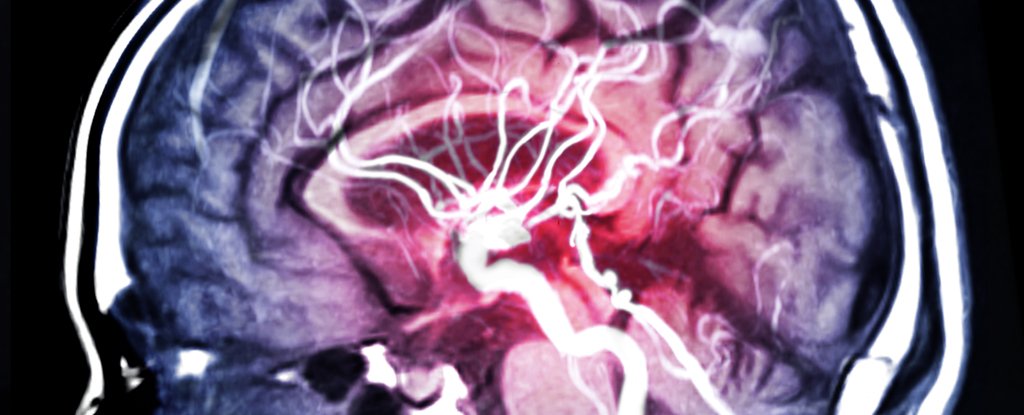
Explaining how something as complex as consciousness can emerge from a grey, jelly-like lump of tissue in the head is arguably the greatest scientific challenge of our time.
The brain is an extraordinarily complex organ, consisting of almost 100 billion cells – known as neurons – each connected to 10,000 others, yielding some ten trillion nerve connections.
We have made a great deal of progress in understanding brain activity, and how it contributes to human behaviour.
But what no one has so far managed to explain is how all of this results in feelings, emotions and experiences.
How does the passing around of electrical and chemical signals between neurons result in a feeling of pain or an experience of red?
There is growing suspicion that conventional scientific methods will never be able answer these questions.
Luckily, there is an alternative approach that may ultimately be able to crack the mystery.
For much of the 20th century, there was a great taboo against querying the mysterious inner world of consciousness – it was not taken to be a fitting topic for "serious science".
Things have changed a lot, and there is now broad agreement that the problem of consciousness is a serious scientific issue.
But many consciousness researchers underestimate the depth of the challenge, believing that we just need to continue examining the physical structures of the brain to work out how they produce consciousness.
The problem of consciousness, however, is radically unlike any other scientific problem.
One reason is that consciousness is unobservable.
You can't look inside someone's head and see their feelings and experiences.
If we were just going off what we can observe from a third-person perspective, we would have no grounds for postulating consciousness at all.
Of course, scientists are used to dealing with unobservables.
Electrons, for example, are too small to be seen.
But scientists postulate unobservable entities in order to explain what we observe, such as lightning or vapour trails in cloud chambers.
But in the unique case of consciousness, the thing to be explained cannot be observed.
We know that consciousness exists not through experiments but through our immediate awareness of our feelings and experiences.
So how can science ever explain it?
When we are dealing with the data of observation, we can do experiments to test whether what we observe matches what the theory predicts.
But when we are dealing with the unobservable data of consciousness, this methodology breaks down.
The best scientists are able to do is to correlate unobservable experiences with observable processes, by scanning people's brains and relying on their reports regarding their private conscious experiences.
By this method, we can establish, for example, that the invisible feeling of hunger is correlated with visible activity in the brain's hypothalamus.
But the accumulation of such correlations does not amount to a theory of consciousness.
What we ultimately want is to explain why conscious experiences are correlated with brain activity.
Why is it that such activity in the hypothalamus comes along with a feeling of hunger?
In fact, we should not be surprised that our standard scientific method struggles to deal with consciousness.
As I explore in my new book, Galileo's Error: Foundations for a New Science of Consciousness, modern science was explicitly designed to exclude consciousness.
Before the "father of modern science" Galileo Galilei, scientists believed that the physical world was filled with qualities, such as colours and smells.
But Galileo wanted a purely quantitative science of the physical world, and he therefore proposed that these qualities were not really in the physical world but in consciousness, which he stipulated was outside of the domain of science.
This worldview forms the backdrop of science to this day.
And so long as we work within it, the best we can do is to establish correlations between the quantitative brain processes we can see and the qualitative experiences that we can't, with no way of explaining why they go together.
Mind is matter
I believe there is a way forward, an approach that's rooted in work from the 1920s by the philosopher Bertrand Russell and the scientist Arthur Eddington. Their starting point was that physical science doesn't really tell us what matter is.
This may seem bizarre, but it turns out that physics is confined to telling us about the behaviour of matter.
For example, matter has mass and charge, properties which are entirely characterised in terms of behaviour – attraction, repulsion and resistance to acceleration.
Physics tells us nothing about what philosophers like to call "the intrinsic nature of matter", how matter is in and of itself.
It turns out, then, that there is a huge hole in our scientific world view – physics leaves us completely in the dark about what matter really is.
The proposal of Russell and Eddington was to fill that hole with consciousness.
The result is a type of "panpsychism" – an ancient view that consciousness is a fundamental and ubiquitous feature of the physical world.
But the "new wave" of panpsychism lacks the mystical connotations of previous forms of the view.
There is only matter – nothing spiritual or supernatural – but matter can be described from two perspectives.
Physical science describes matter "from the outside", in terms of its behaviour, but matter "from the inside" is constituted of forms of consciousness.
This means that mind is matter, and that even elementary particles exhibit incredibly basic forms of consciousness.
Before you write that off, consider this.
Consciousness can vary in complexity.
We have good reason to think that the conscious experiences of a horse are much less complex than those of a human being, and that the conscious experiences of a rabbit are less sophisticated than those of a horse.
As organisms become simpler, there may be a point where consciousness suddenly switches off – but it's also possible that it just fades but never disappears completely, meaning even an electron has a tiny element of consciousness.
What panpsychism offers us is a simple, elegant way of integrating consciousness into our scientific worldview.
Strictly speaking it cannot be tested; the unobservable nature of consciousness entails that any theory of consciousness that goes beyond mere correlations is not strictly speaking testable.
But I believe it can be justified by a form of inference to the best explanation: panpsychism is the simplest theory of how consciousness fits in to our scientific story.
While our current scientific approach offers no theory at all – only correlations – the traditional alternative of claiming that consciousness is in the soul leads to a profligate picture of nature in which mind and body are distinct.
Panpsychism avoids both of these extremes, and this is why some of our leading neuroscientists are now embracing it as the best framework for building a science of consciousness.
I am optimistic that we will one day have a science of consciousness, but it won't be science as we know it today.
Nothing less than a revolution is called for, and it's already on its way.

Philip Goff, Assistant Professor of Philosophy, Durham University.
.
Skarekrow
~~DEVIL~~
- MBTI
- Ni-INFJ-A
- Enneagram
- Warlock
Does anyone have any experiences?
I know that @Sensiko has...
Thoughts?
Enjoy!!

One fine evening, you’re returning home after a long day’s work.
As you stroll down the footpath of the street a block away from your house, no one else is around, and you only have the street lamps illuminating your path towards home.
Oddly, the street lamp you just walked by suddenly switched off, only turning on again once you’ve passed it.
Being the level-headed person that you are, you shrug off what happened as mere coincidence and think nothing more to it.
However, three days later, you passed the same row of street lights, and the phenomenon happens again.
Even weirder, this time around, three successive lamps are affected, each one suddenly turning off as you approach, only to switch on again as soon as you step away.
What just happened?
Was this another random coincidence you should dismiss?
Or did you somehow influence the street lights with a hidden energy or power you didn’t know you had?
Many people have personally experienced – or at the very least, witnessed – a streetlight suddenly turning off as someone passes under it.
While some may think that this is mere chance, there are also others that suggest this to be an unknown phenomenon caused by a few individuals who supposedly possess an incomprehensible ability to influence electrical devices.
Over the years, more and more people have become more open with sharing their unusual experiences involving street lamps, and this phenomenon came to be known as “Street Light Interference” or SLI.
WHAT IS STREET LIGHT INTERFERENCE?

“Street Light Interference” is a term coined by paranormal scholar and author Hilary Evans to denote the claimed ability of individuals to turn street lights or outside security building lights on or off when passing near them.
Experience of this nature are quite common, with many people all over the world claiming that they involuntarily and usually spontaneously cause street lamps to go out.
Typically, “the effect is intermittent, infrequent and is without an immediately discernible sequence of cause and effect.”
Although there are many personal anecdotes involving SLI experiences, the circumstances of each case are not always the same as with other instances.
Some people report that they have only encountered switching off a single street light close by, while others claim to have influenced as many as a row of street lights in a single instance.
There also those that possess the capacity to randomly affect only specific street lights, which makes it difficult to discern a testable pattern in studying SLI.
Moreover, though the majority of SLI cases happen while walking, others say the phenomenon also occurs for them while they ride on bicycles, motorbikes, or even the bus.
However, the SLI phenomenon is not limited to streetlights alone.
There are also reports of people who supposedly can spontaneously and intermittently affect other electronic devices, which varies from battery-operated wristwatches to railroad crossing to aircraft navigation equipment.
Some people also claim to affect volume levels on TVs, radios, and music players, and cause credit cards and other magnetically encoded cards to get damaged and erased while in their possession.
There are also those who often experience problems with compasses, causing them to stop or malfunction.
People who supposedly experience the SLI phenomenon are referred to as “SLIders.”
Many “SLIders” suffer from a lack of validation for their skeptical family members and friends unless the time comes that they witness the repeated occurrences firsthand.
Without sufficient explanation for the phenomenon they experience and with no one to turn to confirm them, SLIders are mostly left with their own devices in imagining and speculating regarding the nature of their supposed power to influence street lamps and other items and devices.
STUDIES RELATED TO STREET LIGHT INTERFERENCE
In a modern world where empirical research decides the validity of a theory or a hypothesis, any attempt in determining the main cause of the Street Light Interference phenomenon without thorough scientific investigation is dismissed as mere speculation and intensely rejected by the academic community.
This is where the problem with studying SLI arises.
As with other reported psychic or paranormal phenomena, SLI is very difficult – if not impossible – to reproduce in a laboratory setting.
They seem to occur spontaneously and sporadically without the deliberate intention of the SLIder.
However, there are some informal tests that have been conducted involving this phenomenon, and some of the data gathered in some research and studies are based heavily or solely on the personal anecdotes and subjective reports of the people who claim to have witnessed or experienced SLI for themselves.
Even then, these tests and studies have shown that SLIders are usually unable to recreate the SLI effect on demand.
Prior to his death in 2011, the British paranormal scholar Hilary Evans was the foremost authority on SLI.
Aside from being a pictorial archivist and authoring numerous books on the Fortean, Evans also helped found the Association for the Scientific Study of Anomalous Phenomena or ASSAP in 1981.
And after receiving numerous reports from different people claiming that street lights respond to their presence in an inexplicable manner, Evans decided to uncover the truth behind the mystery.
He collected hundreds of accounts of SLI through his research which he referred to as Street Lamp Interference Data Exchange or SLIDE.
The culmination of this research was the publication of his final book titled, “SLIDERS: The Enigma Street Light Interference.”
EXPLANATIONS FOR STREET LIGHT INTERFERENCE
According to Evans, it is theoretically possible that every person who claims to have experienced SLI could be lying.
However, since the majority of SLIders have “no ostensible motivation apart from a natural and commendable desire to resolve” this mystery, we can probably set aside deliberate deceit for the time being.
And so, based on various research, studies and assumptions from experts that are supportive or skeptical about the validity of the Street Light Interference phenomenon, possible explanations for witness claims of SLI can be grouped into three broad categories – psychological, paranormal, and mechanical.
PSYCHOLOGICAL EXPLANATION

In his book about Street Light Interference, Evans raised this primary question: “does SLI occur at all, or are the alleged witnesses deluding themselves?” According to Evans, a decisive answer to this question cannot be produced until the SLI phenomenon is scientifically tested.
However, he also mentioned the possibility that SLI could be a shared delusion, much like the widespread delusion that has taken place in the past – such as the witchcraft mania that took place in the 16th and 17th centuries – and even in our more enlightened era – such as the on-going alien abduction mania.
However, Evans also noted that SLI does not have the same psychological pay-off as witchcraft or abductions.
Those who seek to enhance their special gift of influencing street lamps will not find much to flatter themselves with achieving such a feat.
In short, while its possibility cannot be disregarded, it seems highly unlikely that all SLI experiences are delusions.
There are also those that suggest that that the SLI phenomenon might be attributed to people’s tendency to see patterns in “random noise.”
Because it is unusual for a light to turn itself on or off when you walk past it, it catches your attention when it does happen.
And when it occurs several times consecutively, people have the tendency to think that there is some kind of mechanism at work that makes it possible. And so, some argue that SLI can trace its roots in the power of suggestion, which requires a mix of different factors to work.
As such, SLI could be brought about by the normal behavior of bulbs getting older, the witness’s observer bias, and some other important factor that is unknown to the person which would help in making sense of the situation.
PARANORMAL PHENOMENON

Street Light Interference as a paranormal phenomenon is considered by skeptics to be the least likely possibility.
By “paranormal,” we are pertaining to what occurs outside the conventionally recognized “normal” scientific parameters.
It doesn’t have to mean that a supernatural force or an occult process is involved.
If SLI really does occur as SLIders claim, then this phenomenon cannot be confined to the parameters of conventional science.
Until now, there is no scientific recognition that the human mind can cause physical effects at a distance, which is what SLIders allege to be the case in SLI.
However, the problem with SLI being a paranormal phenomenon is that it will be difficult to conduct experiments to test SLI since the phenomenon happens only at random and it is not produced by the person willing for it to happen.
There are also those who believe that what is causing street lamps to turn off or on could be some kind of “energy” that is emitted by the human body. SLIders report that the instances they spontaneously influence street lamps usually occur while they are tired, stressed, furious, or sad.
Others, on the other hand, believe that street lamps are affected by some kind of static electricity that is produced by the body.
There are also speculations that SLI might have something to do with the electrical impulses of the brain.
At present, these electrical impulses are known to only have an effect within the body of an individual, but if it could somehow have an effect outside the body, then it could be the unconventional remote control that turns street lights off and on for these SLI eyewitnesses.
MECHANICAL EFFECT

According to Evans, “The fact that a mechanical device is involved logically suggests that a mechanical explanation should be looked for.”
This is precisely why some skeptics suggest that SLI occurs as a consequence of lights nearing the end of their life.
Typical modern street lamps are of the low-pressure sodium-vapor variety, which emits red glow at startup and turn into a steady monochrome yellow once they’re fully operating.
The lamps automatically switch on at sundown through the activation of a light-sensitive cell or a photocell.
When sunlight returns at dawn, the photocell is triggered again, switching the lamps off.
These bulbs take three to four minutes to light up and have a lifespan of 8,000 hours or approximately two years.
When a bulb reaches the end of its life, it manifests a behavior that could explain the SLI phenomenon.
This behavior is called “cycling,” which entails street lamps turning on and off every few minutes until the time comes that a technician comes along to replace the bulb.
It is also possible that the bulb becomes slightly dislodged from its socket.
If that is the case, even a minor vibration – such as that caused by a passing car, bike, or person – is enough to make the lamp blink for a brief moment.
The Street Light Interference is a phenomenon that remains to be a genuine and fascinating mystery to those who believe it, and to those who are open to reserve judgment on it until such a time comes that sufficient empirical evidence is presented that completely disproves it or verifies it.
Should it be proven true later on, SLI carries profound and exciting implications for science as well as for our knowledge about human potential.
But speculations aside, we also must not lose sight of the fact that at least some, if not all, incidents of SLI can be attributed to entirely mundane causes. It could simply be a natural event that could be explained by logical reasons, but we are unable to conclude as such because of insufficiency in tangible or verifiable evidence and the influence of psychological factors.
—
SOURCES:
I know that @Sensiko has...
Thoughts?
Enjoy!!

The Mystery of Streetlight Interference


One fine evening, you’re returning home after a long day’s work.
As you stroll down the footpath of the street a block away from your house, no one else is around, and you only have the street lamps illuminating your path towards home.
Oddly, the street lamp you just walked by suddenly switched off, only turning on again once you’ve passed it.
Being the level-headed person that you are, you shrug off what happened as mere coincidence and think nothing more to it.
However, three days later, you passed the same row of street lights, and the phenomenon happens again.
Even weirder, this time around, three successive lamps are affected, each one suddenly turning off as you approach, only to switch on again as soon as you step away.
What just happened?
Was this another random coincidence you should dismiss?
Or did you somehow influence the street lights with a hidden energy or power you didn’t know you had?
Many people have personally experienced – or at the very least, witnessed – a streetlight suddenly turning off as someone passes under it.
While some may think that this is mere chance, there are also others that suggest this to be an unknown phenomenon caused by a few individuals who supposedly possess an incomprehensible ability to influence electrical devices.
Over the years, more and more people have become more open with sharing their unusual experiences involving street lamps, and this phenomenon came to be known as “Street Light Interference” or SLI.
WHAT IS STREET LIGHT INTERFERENCE?

“Street Light Interference” is a term coined by paranormal scholar and author Hilary Evans to denote the claimed ability of individuals to turn street lights or outside security building lights on or off when passing near them.
Experience of this nature are quite common, with many people all over the world claiming that they involuntarily and usually spontaneously cause street lamps to go out.
Typically, “the effect is intermittent, infrequent and is without an immediately discernible sequence of cause and effect.”
Although there are many personal anecdotes involving SLI experiences, the circumstances of each case are not always the same as with other instances.
Some people report that they have only encountered switching off a single street light close by, while others claim to have influenced as many as a row of street lights in a single instance.
There also those that possess the capacity to randomly affect only specific street lights, which makes it difficult to discern a testable pattern in studying SLI.
Moreover, though the majority of SLI cases happen while walking, others say the phenomenon also occurs for them while they ride on bicycles, motorbikes, or even the bus.
However, the SLI phenomenon is not limited to streetlights alone.
There are also reports of people who supposedly can spontaneously and intermittently affect other electronic devices, which varies from battery-operated wristwatches to railroad crossing to aircraft navigation equipment.
Some people also claim to affect volume levels on TVs, radios, and music players, and cause credit cards and other magnetically encoded cards to get damaged and erased while in their possession.
There are also those who often experience problems with compasses, causing them to stop or malfunction.
People who supposedly experience the SLI phenomenon are referred to as “SLIders.”
Many “SLIders” suffer from a lack of validation for their skeptical family members and friends unless the time comes that they witness the repeated occurrences firsthand.
Without sufficient explanation for the phenomenon they experience and with no one to turn to confirm them, SLIders are mostly left with their own devices in imagining and speculating regarding the nature of their supposed power to influence street lamps and other items and devices.
STUDIES RELATED TO STREET LIGHT INTERFERENCE
In a modern world where empirical research decides the validity of a theory or a hypothesis, any attempt in determining the main cause of the Street Light Interference phenomenon without thorough scientific investigation is dismissed as mere speculation and intensely rejected by the academic community.
This is where the problem with studying SLI arises.
As with other reported psychic or paranormal phenomena, SLI is very difficult – if not impossible – to reproduce in a laboratory setting.
They seem to occur spontaneously and sporadically without the deliberate intention of the SLIder.
However, there are some informal tests that have been conducted involving this phenomenon, and some of the data gathered in some research and studies are based heavily or solely on the personal anecdotes and subjective reports of the people who claim to have witnessed or experienced SLI for themselves.
Even then, these tests and studies have shown that SLIders are usually unable to recreate the SLI effect on demand.
Prior to his death in 2011, the British paranormal scholar Hilary Evans was the foremost authority on SLI.
Aside from being a pictorial archivist and authoring numerous books on the Fortean, Evans also helped found the Association for the Scientific Study of Anomalous Phenomena or ASSAP in 1981.
And after receiving numerous reports from different people claiming that street lights respond to their presence in an inexplicable manner, Evans decided to uncover the truth behind the mystery.
He collected hundreds of accounts of SLI through his research which he referred to as Street Lamp Interference Data Exchange or SLIDE.
The culmination of this research was the publication of his final book titled, “SLIDERS: The Enigma Street Light Interference.”
EXPLANATIONS FOR STREET LIGHT INTERFERENCE
According to Evans, it is theoretically possible that every person who claims to have experienced SLI could be lying.
However, since the majority of SLIders have “no ostensible motivation apart from a natural and commendable desire to resolve” this mystery, we can probably set aside deliberate deceit for the time being.
And so, based on various research, studies and assumptions from experts that are supportive or skeptical about the validity of the Street Light Interference phenomenon, possible explanations for witness claims of SLI can be grouped into three broad categories – psychological, paranormal, and mechanical.
PSYCHOLOGICAL EXPLANATION

In his book about Street Light Interference, Evans raised this primary question: “does SLI occur at all, or are the alleged witnesses deluding themselves?” According to Evans, a decisive answer to this question cannot be produced until the SLI phenomenon is scientifically tested.
However, he also mentioned the possibility that SLI could be a shared delusion, much like the widespread delusion that has taken place in the past – such as the witchcraft mania that took place in the 16th and 17th centuries – and even in our more enlightened era – such as the on-going alien abduction mania.
However, Evans also noted that SLI does not have the same psychological pay-off as witchcraft or abductions.
Those who seek to enhance their special gift of influencing street lamps will not find much to flatter themselves with achieving such a feat.
In short, while its possibility cannot be disregarded, it seems highly unlikely that all SLI experiences are delusions.
There are also those that suggest that that the SLI phenomenon might be attributed to people’s tendency to see patterns in “random noise.”
Because it is unusual for a light to turn itself on or off when you walk past it, it catches your attention when it does happen.
And when it occurs several times consecutively, people have the tendency to think that there is some kind of mechanism at work that makes it possible. And so, some argue that SLI can trace its roots in the power of suggestion, which requires a mix of different factors to work.
As such, SLI could be brought about by the normal behavior of bulbs getting older, the witness’s observer bias, and some other important factor that is unknown to the person which would help in making sense of the situation.
PARANORMAL PHENOMENON

Street Light Interference as a paranormal phenomenon is considered by skeptics to be the least likely possibility.
By “paranormal,” we are pertaining to what occurs outside the conventionally recognized “normal” scientific parameters.
It doesn’t have to mean that a supernatural force or an occult process is involved.
If SLI really does occur as SLIders claim, then this phenomenon cannot be confined to the parameters of conventional science.
Until now, there is no scientific recognition that the human mind can cause physical effects at a distance, which is what SLIders allege to be the case in SLI.
However, the problem with SLI being a paranormal phenomenon is that it will be difficult to conduct experiments to test SLI since the phenomenon happens only at random and it is not produced by the person willing for it to happen.
There are also those who believe that what is causing street lamps to turn off or on could be some kind of “energy” that is emitted by the human body. SLIders report that the instances they spontaneously influence street lamps usually occur while they are tired, stressed, furious, or sad.
Others, on the other hand, believe that street lamps are affected by some kind of static electricity that is produced by the body.
There are also speculations that SLI might have something to do with the electrical impulses of the brain.
At present, these electrical impulses are known to only have an effect within the body of an individual, but if it could somehow have an effect outside the body, then it could be the unconventional remote control that turns street lights off and on for these SLI eyewitnesses.
MECHANICAL EFFECT

According to Evans, “The fact that a mechanical device is involved logically suggests that a mechanical explanation should be looked for.”
This is precisely why some skeptics suggest that SLI occurs as a consequence of lights nearing the end of their life.
Typical modern street lamps are of the low-pressure sodium-vapor variety, which emits red glow at startup and turn into a steady monochrome yellow once they’re fully operating.
The lamps automatically switch on at sundown through the activation of a light-sensitive cell or a photocell.
When sunlight returns at dawn, the photocell is triggered again, switching the lamps off.
These bulbs take three to four minutes to light up and have a lifespan of 8,000 hours or approximately two years.
When a bulb reaches the end of its life, it manifests a behavior that could explain the SLI phenomenon.
This behavior is called “cycling,” which entails street lamps turning on and off every few minutes until the time comes that a technician comes along to replace the bulb.
It is also possible that the bulb becomes slightly dislodged from its socket.
If that is the case, even a minor vibration – such as that caused by a passing car, bike, or person – is enough to make the lamp blink for a brief moment.
The Street Light Interference is a phenomenon that remains to be a genuine and fascinating mystery to those who believe it, and to those who are open to reserve judgment on it until such a time comes that sufficient empirical evidence is presented that completely disproves it or verifies it.
Should it be proven true later on, SLI carries profound and exciting implications for science as well as for our knowledge about human potential.
But speculations aside, we also must not lose sight of the fact that at least some, if not all, incidents of SLI can be attributed to entirely mundane causes. It could simply be a natural event that could be explained by logical reasons, but we are unable to conclude as such because of insufficiency in tangible or verifiable evidence and the influence of psychological factors.
—
SOURCES:
- https://en.wikipedia.org/wiki/Street_light_interference_phenomenon
- http://www.profilingtheunexplained.com/psychics_mediums/sliders.html
- http://www.messagetoeagle.com/mystery-of-streetlight-interference-are-you-also-a-slider-2/
- http://mysteriousuniverse.org/2013/05/streetlamp-interference-a-modern-day-paranormal-mystery/
- https://www.thoughtco.com/sliders-and-streetlight-phenomenon-2596547
- http://www.theepochtimes.com/n3/109503-exploring-the-phenomenon-of-street-light-interference/
- http://www.csicop.org/si/show/curious_case_of_street_lamp_interference
- http://www.assap.ac.uk/newsite/Docs/sli.pdf
Skarekrow
~~DEVIL~~
- MBTI
- Ni-INFJ-A
- Enneagram
- Warlock
- MBTI
- INFJ
- Enneagram
- 954 so/sx
lmfaoooo



